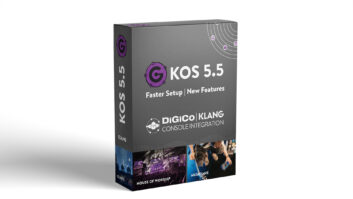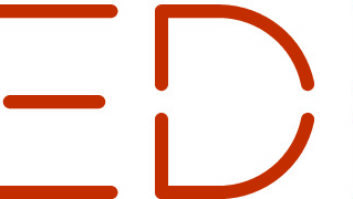
Market and technology changes are creating new opportunities for custom integrators at a time when the business is strong and, for most integrators, getting more profitable.
Key changes evident at CEDIA 2017 include the growing influence of voice control, new connectivity options, new opportunities to profit from the DIY smarthome boom, and more 4K UHD TV and 4K projector options. Perhaps most important, integrators will find new business tools to further boost sales and profitability, including VR tools to help close sales.
Here are five of the top developments expected at the show:
1. Voice UI: A growing number of home-control systems and A/V products will network with the Amazon Echo and Google Home smart speakers to enable voice control of select functions.
“Voice is critical at this point,” said CEDIA emerging technologies VP Dave Pedigo. Added Seth Evenson, AVAD’s director of customer experience management, “Consumers will expect voice in any level of system.”
As a result, Denon and Marantz will unveil their first AVRs with voice control of select functions through the microphones of Amazon’s Echo and Show smart speakers. The AVRs will also play the streaming services embedded in the Amazon products and will incorporate Amazon’s recently added wireless multi-room capability.
For its part, Yamaha will announce Echo/Show voice control of more than 40 MusicCast wireless multi-room audio products via an early-October firmware update. Bose will for the first time demo Echo control of its multi-room Wi-Fi speakers.
Also, Josh.ai will demonstrate Josh Micro, its second home-control system with proprietary voice UI. It fits in the palm of the hand, and one processor is intended per room. Josh Micro understands where it is so that users don’t have to specify a room when saying commands.
2. Connectivity: Options are changing as mesh Wi-Fi and faster Ethernet technologies become more widely available, enabling home networks to reliably handle a growing amount of content and home-control traffic. Suppliers exhibiting proprietary mesh Wi-Fi solutions include Open Mesh, Eero, Ruckus, Ubiquiti, Netgear, Luma, and Aruba.
More high-speed Ethernet switches, using the relatively new 2.5G/5GBASE-T standard (or IEEE 802.3bz), could also put in an appearance. Their bandwidth grows to 2.5Gbps through 100 meters of legacy Cat-5e cables and to 5Gbps through 100 meters over legacy Cat-6 cable.
All of the new connectivity choices “are solving problems,” said AVAD’s Evenson. “The technology is driven by the amount of bandwidth being used and the complexity of systems.”
New wireless multi-room platforms, including Apple AirPlay 2 and proprietary adaptations of Bluetooth 5.0, also deliver new connectivity options. Denon and Marantz will show their first AVRs with AirPlay2. In its latest flagship smartphones, Samsung included proprietary technology on top of Bluetooth 5.0 to support simultaneous wireless streaming to any two Bluetooth speakers.
Integrators will also seek clarity on the timetable for the now-delayed rollout of HDMI 2.1 technology.
3. DIY gains: The DIY segment will be represented in force as more integrators embrace the products to — perhaps counterintuitively — boost installation sales. “Direct marketing [by suppliers] to consumers is creating demand,” said AVAD’s Evenson. “But consumers rely on a professional to do the integration with existing installed systems in the home.” And many consumers are do-it-for-me consumers, he added.
ProSource president/CEO Dave Workman also sees value in DIY products, which he said are “being integrated into the types of jobs our dealers do.”
4. More 4K choices: 4K UHD TVs and projector options are growing as more 4K laser projectors put in an appearance and Sony shows its first OLED TVs to compete with LG’s OLEDs. New HDR technologies are also emerging in 4K TVs, including hybrid-log gamma (HLG) and the Samsung-promoted dynamic HDR10+.
Hisense, which is exhibiting for the first time, will bring its $9,999-UPP Laser TV, a short-throw 3,000-lumen 4K laser projector with built-in ATSC tuner, Hisense smart-TV platform, built-in Harman/Kardon speakers, and included wallmount 100-inch passive projection screen that weighs less than 50 pounds. Laser TV is said to deliver brightness levels similar to that of mainstream 300-nit LCD TVs for use in bright living rooms while eliminating the typical glare of glass LCD-TV screens. The main chassis sits only 6 inches from the screen to project a 100-inch image.
The Laser TV is priced disruptively compared to similarly sized LCD TVs priced up to $60,000, U.S. marketing VP Mark Viken told TWICE. Many 88-inch LCD TVs are priced at $20,000, he noted.
The TV also features HDR 10, 20,000-hour laser engine, and the Tiki Live app, which delivers local broadcast-TV stations through a broadband connection.
5. Taking care of business: Integrators will continue to focus more on profitable business practices, and suppliers will step in to help.
“Everything is pretty healthy” in the channel, CEDIA’s Pedigo said, citing pent-up demand, new construction growth, and improving integrator profitability as more integrators take business classes.
To keep the momentum going, Core Brands will launch a national rollout of its Elan New Home Program, conceived to help dealers support builders of production homes, custom homes and MDUs. For its part, Samsung will promote its 5-Star Solutions program, which includes a new sales program with margin incentives and the addition of IP control to integrate with key home-control systems.
And Fractal Mob will unveil its Modus VR software, which lets clients view virtual custom home-theater options in a room through an HTC Vive VR headset and connected high-end PC. Clients physically walk through home-theater designs.













